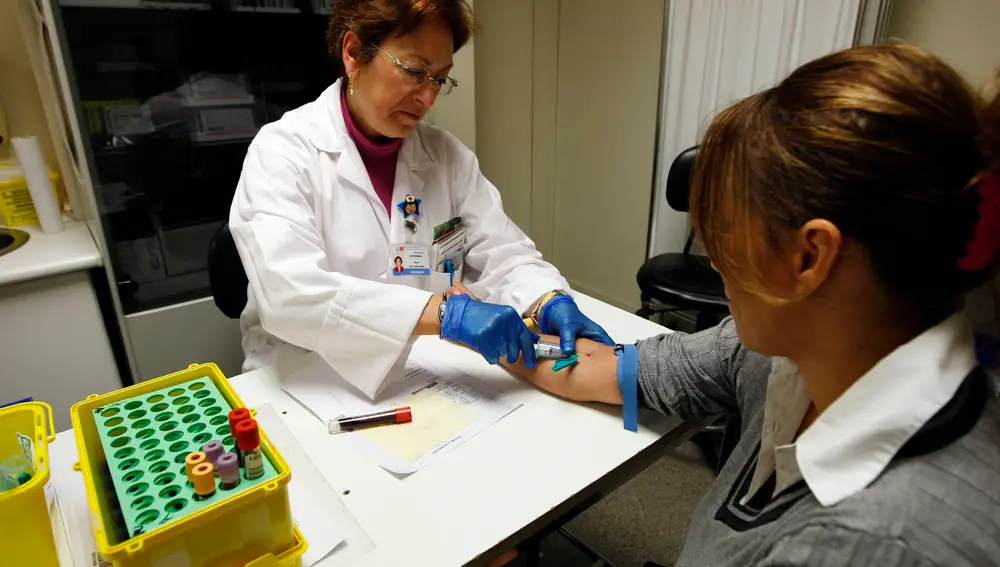In 2018, a study was published that estimated that around 15% of world population You may suffer from some type of phobia, which is a subtype within anxiety disorders that is characterized by an irrational and extremely intense fear of something that poses little or no danger to the affected person.
Typically, these phobias manifest with the sensation of a paralyzing fear, often sustained by catastrophic thoughts. Although, depending on the severity of the change, even physical symptoms may appear, such as nausea, increased blood pressure, tachycardia, dry mouth, tremors, headache or excessive sweating. For all the reasons mentioned above, phobias cannot be considered a minor anxiety disorder… or something frivolous or bizarre. Instead, serious disorders that require be approached carefully.

There are some phobias that are really weird, such as xanthophobia, which is the fear of the color yellow; metrophobia, which is the fear of poetry, or hexakosioihexekontahexaphobia, which is the fear of the number 666. These are called specific phobias and affect a very small part of the world's population. The truth is that, from People's 15% suffer from this psychological disorder to some degree, the vast majority suffer from some of the the 7 most common phobias, that is, zoophobia, hematophobia, acrophobia, claustrophobia, astrophobia and hypochondria. Today we will focus on the case of hematophobia:
[[H2:The fear of blood… one of the most common fears]]
As we have explained previously, this phobia is one of the most common. In fact, it is estimated that up to 4% of the population You can suffer from this phobia to a greater or lesser extent, and it is much more prevalent in women than in men. Basically, hematophobia consists of an extreme fear of bloodto the needles and the open wounds.
Something that happens in the particular case of hematophobia, and that happens in the opposite way in the rest of phobias, is that in those affected by hemophobia the heart rate not only does not increase, but it decreases. He sudden drop in blood pressure the amount of blood reaching the brain decreases, which in turn causes dizziness. In many cases, the heart rate of people affected by hemophobia decreases so much… It can lead -even- to fainting. It is a phenomenon for which there is still no definitive and absolutely accepted explanation.

Another difference that hematophobia also presents in relation to other phobias is that, when people who suffer from it are in the presence of this stimulus, they experience a sudden decreased brain activityin other words, they stop thinking… instead of letting themselves be carried away by an infinite number of alarmist thoughts, which is what happens in the case of other phobias.
Is there a cure?
He origin of these phobias It's still a hotly debated subject... and different currents of psychology have different theories about it: the cognitive-behavioral current argues that phobias originate from rewards and punishments during childhood. Biological currents -on the other hand- maintain that the genesis of these irrational fears is found in the genetic predispositions inherited from our parents; and integrative theories -which are the most accepted- understand phobias as a multifactorial phenomenon. In other words, they originate from a mixture of biological, environmental, social and psychological factors.
But whatever their origin, the reality is that there are many people affected by these irrational fears. And this can lead them to live a life full of self-imposed limits, as long as they don't have to expose themselves to stimuli that cause panic. Depending on the particularities of the case… and depending on how it manifests itself in each person, the recommendations of a qualified professional They can be radically different.
Although, in general, we can say that to treat this class of phobias, one of the most accepted options is cognitive behavioral therapy; which aims to adapt the patient's mental schemes, to discard the catastrophic thoughts that cause the stimulus that gives rise to the phobia. Once the affected person is able to deal with this stimulus (in this case, large objects) putting into practice the new resources they have learned, the flight response it will disappear.

Another method that is also usually recommended in this type of case is controlled exposure therapy. Thanks to this procedure, the patient's fears gradually dissipate as the sessions progress. This is known as systematic desensitization. In some serious cases, it may be necessary use of anxiolytics to calm physical symptoms of anxiety, such as rapid heartbeat or tremors. So that the patient can better cope with the therapy.
In short, hematophobia can significantly affect the lives of people who suffer from it. But there are some treatments that have proven to be effective to help overcome this fear. It is important to note that seeking professional help is critical to achieving a successful recovery. Therefore, if you suffer from hematophobia or know someone who does, don't hesitate to consult a psychologist specialized in phobias to receive appropriate treatment and improve your quality of life. Don't let the fear of blood stop you from enjoying your everyday life.












